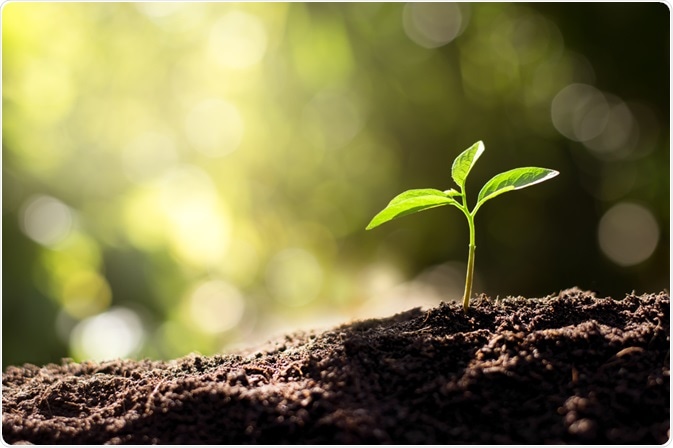Geomicrobiology is the study of the role of microbes in the geological and geochemical processes that shaped the earth and continue to function today. Microbes play a vital role in recycling, generating, sequestering, and removing a wide variety of substances and chemical elements in the environment via biogeochemical cycles that span the atmosphere, hydrosphere, and deep lithosphere.

Image Credit: kram-9/Shutterstock.com
When did geomicrobiology become a field of study?
The term geomicrobiology was coined in the 1950s to describe the study of these processes, though scientists had been studying soil and aquatic microbiology since the 19th century. Christian Ehrenberg identified in 1836 that Gallionella ferruginea was associated with the presence of bog iron deposits, though at the time he misidentified this bacteria as a protozoan.
Later in 1887, Sergei Winogradsky noted that Beggiatoa bacterium could oxidize hydrogen sulfide gas to solid elemental sulfur, then in 1888 that Leptothrix ochracea bacterium was involved in the liberation of iron carbonate from rock to generate iron oxide.
The role of bacteria in calcium and manganese precipitation in the oceans, methane formation, rock weathering, and the nitrogen cycle became clearer over the next several decades, often preceded by recognition of the microorganisms metabolic activity in the laboratory and the later realization of the extent that these processes have played in shaping the earth and its ecosystems.
Even into the later 20th century, discoveries regarding the role of microorganisms in shaping the earth were being recognized. For example, it was long thought that microorganisms would be unable to survive outside of a relatively narrow pH and temperature range, but the discovery of extremophile bacteria that thrive in strongly acidic or alkali environments around mine drainage sites along with the identification of those living around hot thermal vents and in frozen conditions at the poles changed this view.
Reports that the influence of microbial life extended kilometers below the earth’s terrestrial surface and the sea floor in the 1990s and 2000’s further fueled the realization that many of the aspects of geology previously considered entirely the result of physical and chemical forces were in fact due to the actions of microorganisms over millions of years.
The field of geomicrobiology had historically established that subsurface anaerobic life is arranged into zones according to a “thermodynamic ladder”, where the highly energetic iron reducers preclude sulfate reducers, which similarly exclude methane-producing microorganisms. Environmental pH can shift the metabolic route that is most thermodynamically favorable, however.
For example, in acidic conditions, iron reducers hold a further energetic advantage not present in alkaline conditions. In this way, certain types of microorganisms may come to dominance in a particular geographic region, though long-term bioreactor experiments reveal that all three types of energy producers work symbiotically to balance the availability of resources, rather than directly competing.
Newly emerging geomicrobiology
The upper oceanic crust is continuously created at the mid-ocean ridges, where high-temperature basalt-seawater reactions generate energy to sustain life, with heat-generating hydrothermal currents that recycle and collect sediment. Anaerobic and aerobic microorganisms thrive in these environments and contribute towards hydrogen, carbon, and sulfur recycling, and have been thought the constitute the majority of microbial life in the oceans.
As the basalt rock is pushed away from the ridge it cools and undergoes cracking and oxidation over a period of around 10 million years, at which point the intensity of basalt-seawater reactions and thus fluid and sediment circulation decline. Over 90% of the ocean's lithosphere is older than 10 million years and is deficient in organic sediment and abundant in dissolved oxygen, and thus it was thought that comparatively few microorganisms would live in these conditions.
In a paper by Suzuki et al. (2020) microbial cells are identified in samples of subseafloor basaltic lava older than 10 million years, living off of abundant iron-rich marine sediment. It was found that dissolved molecular oxygen penetrates the basalt rock, sustaining aerobic microbes throughout the overlying sediment. Most of the microorganisms identified in such old basalt engaged in heterotrophy and methanotrophy, feeding on the dissolved organic matter brought in by seawater flows or generated by rock weathering.
The authors suggest that this realization may have implications towards the possibility of life on Mars, whose basaltic crust formed around 4 billion years ago and were once covered in oceans like on Earth, providing a model around which astrobiologists could investigate the past existence of life on other planets.
References:
Further Reading